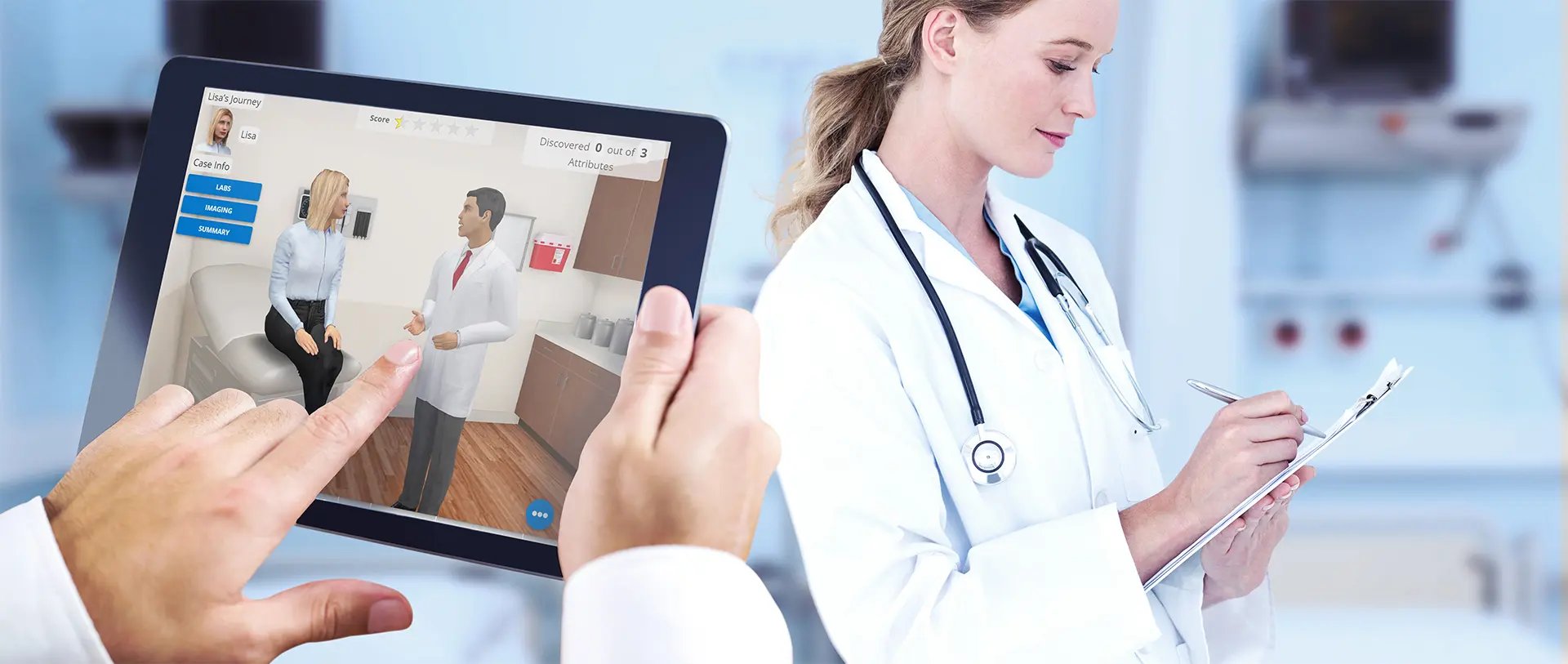
When a physician attends a continuing medical education event and does well on the posttest, are they really ready to apply these new strategies with their patients? Not often.
Learners first need to demonstrate competency in how and when to apply these new strategies, before they will be confident enough to use them with their patients. As Moore expressed so well in 2009, competency is best developed by practicing decision-making in a safe environment, with personalized feedback from watchful experts.

It converts “Knowing” into “Doing”
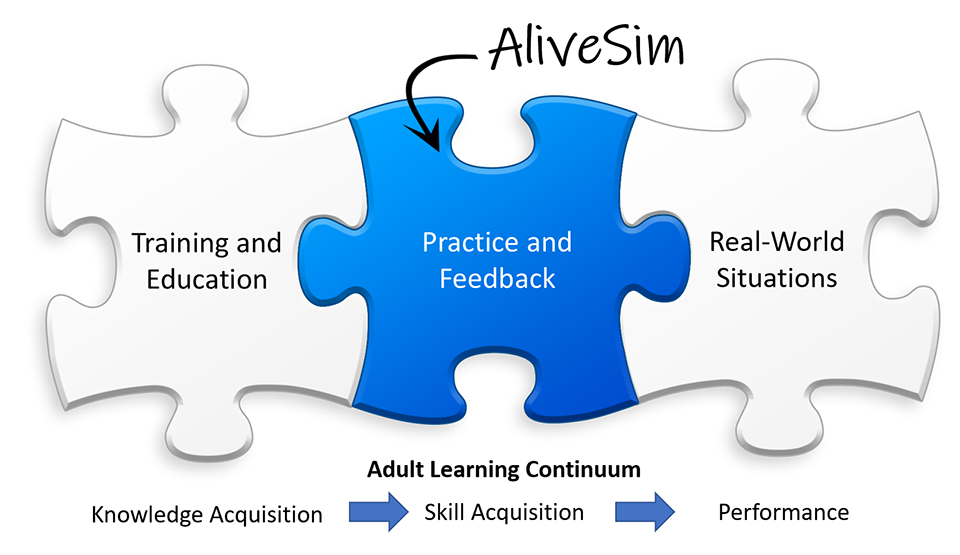
It’s been a decade since Moore’s Framework, and CME still struggles with incorporating practice and personalized, expert feedback into its initiatives. Meetings with ARS don’t give personalized feedback, and personalized feedback from faculty is expensive and doesn’t scale. Out-dated simulations respond with text and video - they’re clunky and passive. There’s got to be a better way.
That’s why we created AliveSim. Its virtual technology allows physicians, NPs, and PAs to practice virtually, in realistic situations, with conversational, virtual clinicians that deliver personalized, expert feedback. That’s the practice-with-feedback part of Moore’s Framework. Learn-by-doing technology is the future for building clinical competency in managing any disease state.
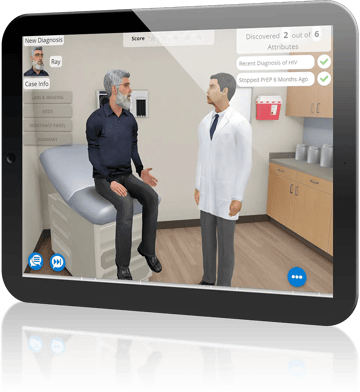
Safe Practice with Coaching
Immerses physicians in a series of realistic clinical situations where they practice decision-making and receive expert coaching, so they can recognize optimal decision patterns.
Multiple Decisions/Scenarios
Simulates multiple clinical situations to establish robust pattern recognition that effectively translates to real-world patients. Patients will look different from any one case study or vignette.
Realistic Interactive Clinical Conversations
Instead of reading dialog or passively watching a video clip, participants are immersed in realistic conversations with interactive virtual clinicians.
Virtual Coaching and Mentoring
There’s no bland text feedback when decisions are made. With AliveSim, virtual clinicians provide expert viewpoints, debate options, and mentor participants on each decision.
"This was great. The virtual presentation is almost like working on a real patient"
— Internal Medicine Physician
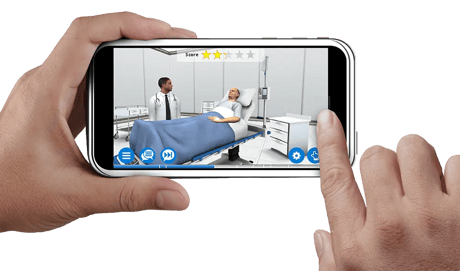
Plus, engaging 3D environments, interactive virtual human conversations, gamification, beautiful interfaces, mobile first design, and more.
See how we combined cognitive science with virtual game technology
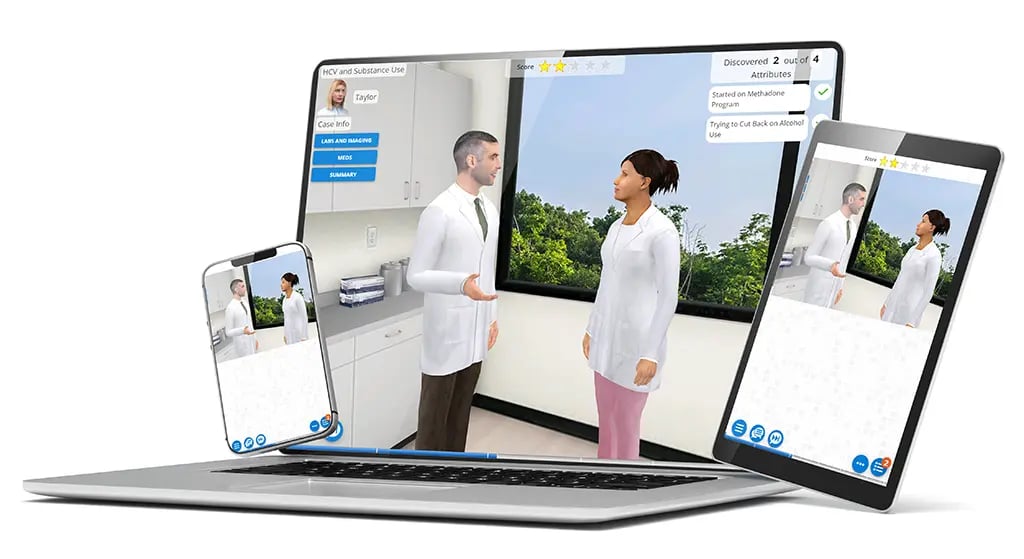
Introducing new medical knowledge and then reviewing a few case study examples does not instill the confidence that a physician needs to feel comfortable changing their decision-making in the real world, where each patient is different. Virtual practice, across diverse situations, with personalized feedback at each decision point, enables participants to recognize and deploy the nuanced patterns of optimal decision-making that experts use. This virtual practice, uniquely delivered via AliveSim, is an essential part of the adult learning continuum, and accelerates knowledge transfer to real-world situations.
— Physician, Ophthalmology
While all simulators used in continuing medical education have the same three essential attributes, only AliveSim Simulations are designed to maximize each one. The result – realistic clinical practice with expert coaching that enables clinicians to build new situational decision-making skills.
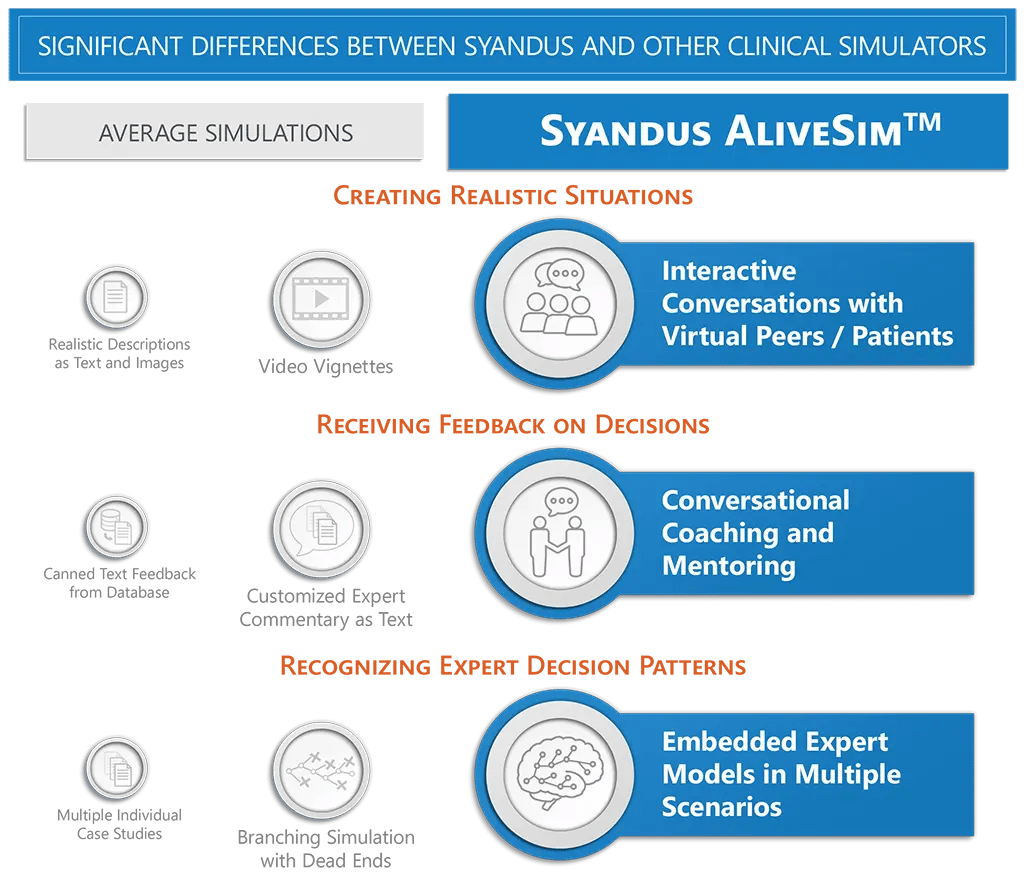
The AliveSim platform originated from the idea that entertainment technology can be combined with modern learning modalities to create realistic virtual experience that will help people learn cognitive decision-making skills faster. Syandus has developed and honed the platform over the past eight years.

Syandus won multiple research awards from the National Science Foundation that fueled the development of the AliveSim Platform.
AliveSim Analytics Portal. This web portal provides access to all activity data 24/7, including utilization, demographics, pre/posttest results, evaluation results, certificates granted, and a deep exploration of decision data that is mapped to practice gaps.
Decision Specific Metrics. AliveSim captures 1000s of clinical decisions, and proactively assigns clinical context to each one to achieve relevant, statistically meaningful insights.
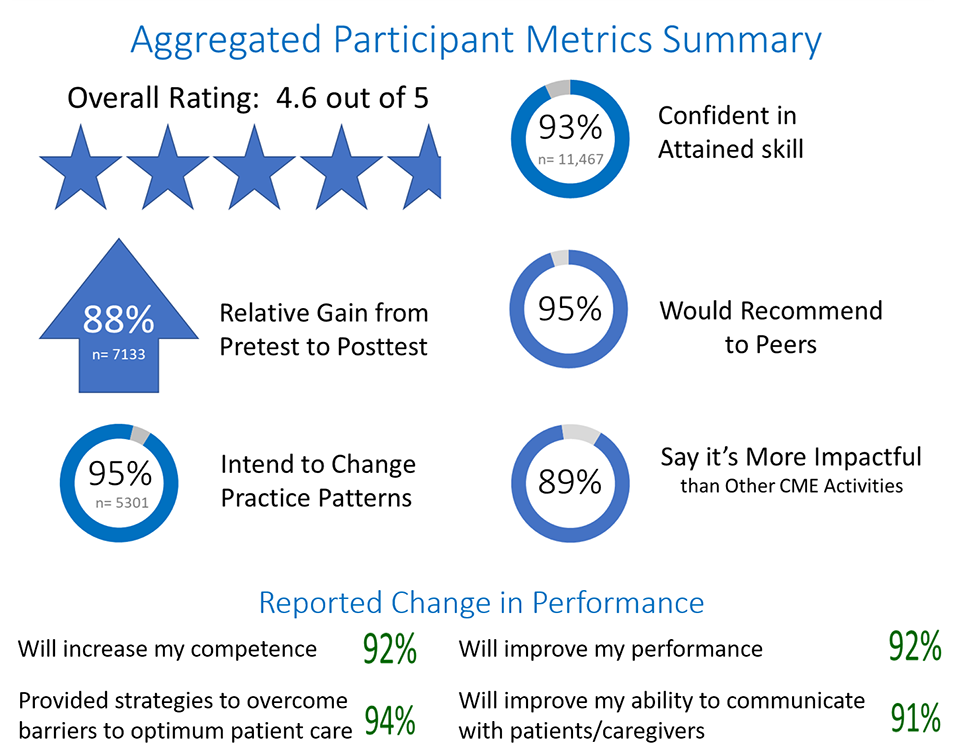
CME survey responses show that the AliveSim Experience resonates with clinicians.
"Awesome! Would love to participate in CMEs like this one again."
— Internal Medicine Physician
"The BEST approach to CME I have seen in a long time. Excellent program as well as information"
— Physician
"This was great the virtual presentation— is almost like working on a real patient"
— Internal Medicine Physician
"this way is the best way for learning and refreshing our knowledge about HIV management."
— MD/DO, Infectious Disease
"Perfect and really useful"
— Medical Oncology Physician
"A true brain stormer which broadens your vision in treating mCRC. Please provide the same for other cancers too."
— Medical Oncologist
"this was excellent I want more like this!"
— MD/DO, Endocrinology
"Best CME experience ever."
— Other Healthcare Professional, Other ("Cancer Patient Advocate")
"This format is FANTASTIC. Please make more CME programs in this format. It is as educational as any course but is far less boring."
— PharmD/RPh, Pharmacy
"This is the best by far, simulation was great"
— MD, Internal Medicine
"This is the best online CME I have participated in. The interactive approach leads to learning and retention of information"
— NP, Family Medicine
"Mimics a typical clinic interaction"
— MD/DO, Internal Medicine
"best CE I have done. Very informative and entertaining. Makes learning very enjoyable and builds lasting knowledge."
— PharmD/RPh, Internal Medicine
"I like the format, almost hands-on."
— Physician, Family Practice
"The best experience I have had with all CME programs I have taken"
— PharmD/RPh, Pharmacy
Many more CME Survey results are available.
AliveSim is used across diverse therapeutic areas, including oncology, diabetes, obesity, neurology, rheumatology, cardiology, GI, respiratory, ophthalmology, infectious disease, and sleep medicine.
AliveSim enables your participants to practice applying new clinical concepts, such as new guidelines, new indications, new therapeutic options, diagnosis, risk management, the integration of new molecular testing, and more. In each area, the conversational expert feedback is what makes AliveSim so compelling for learners.
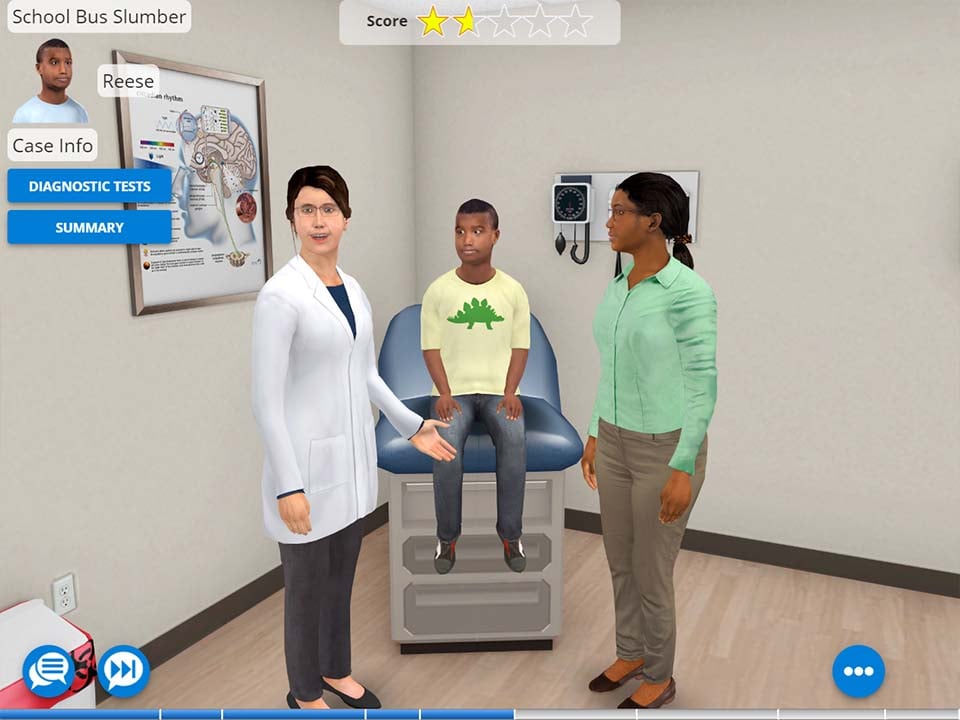
These formats are designed to cover any clinical skill-building need in CME. Each uses multiple scenarios so that participants can recognize, experience, and understand the optimal decision-making that experts use.
Simulation in Smaller Bursts. Fast-paced, 5 to 10-minute scenarios that focus on a specific learning objective. Participants are immersed in multiple clinical situations designed to allow them to recognize the optimal decision patterns of experts.
Targeted Virtual Practice simulations are used in 0.5 to 1.0 credit hour activities. These activities can be used alone, or added to a larger initiative to convert “knowing” into “doing.”
Participants manage patients over time, in multiple scenarios using our popular, longer format. Scenarios are typically 15 to 20 minutes in length. This is the ideal solution when practice gaps involve the management of disease over time, such as chronic diseases.
Patient management scenario simulations are used in 1.0 to 2.0 credit hour activities. A minimum of two scenarios are used to develop optimal pattern recognition in the topic. Short Targeted Virtual Practice scenarios can also be included to reinforce specific learning objectives.
AliveSim creates an immersive, safe environment for participants to build skill and confidence in applying new clinical evidence, in realistic situations, in any disease state.
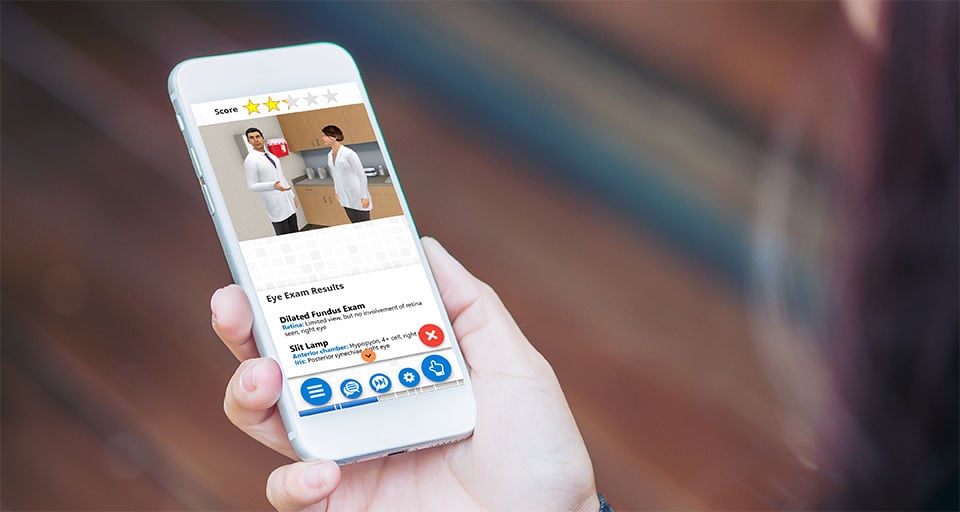
We created the Targeted Virtual Practice format so you can offer compelling simulation activities starting at 0.5 credits. Scenarios are shorter, and the simulation is focused on one or two related learning objectives. They are faster to create, yet provide a wealth of outcomes data.
In Targeted Virtual Practice, we construct a series of well-crafted decisions that allow the learner to recognize patterns of optimal decision-making. Isolated case studies and vignettes do not provide this pattern recognition, which is essential to gaining the competence to transfer knowledge to patient outcomes.
Many live CME events bring thought leaders to a venue (or webinar) where they mix didactic lecture with working through case studies. Even in the best of these events, the decision-making and feedback is limited and not personalized. Therefore, skill development is incomplete and will require further development before a physician will feel comfortable changing their clinical behavior.
Adding Targeted Virtual Practice as an enduring component afterwards, will introduce clinical skill-building, to convert “knowing” into “doing” and create a more effective program. Retention from the event will also increase, as each participant personally applies the knowledge in realistic, clinical situations.
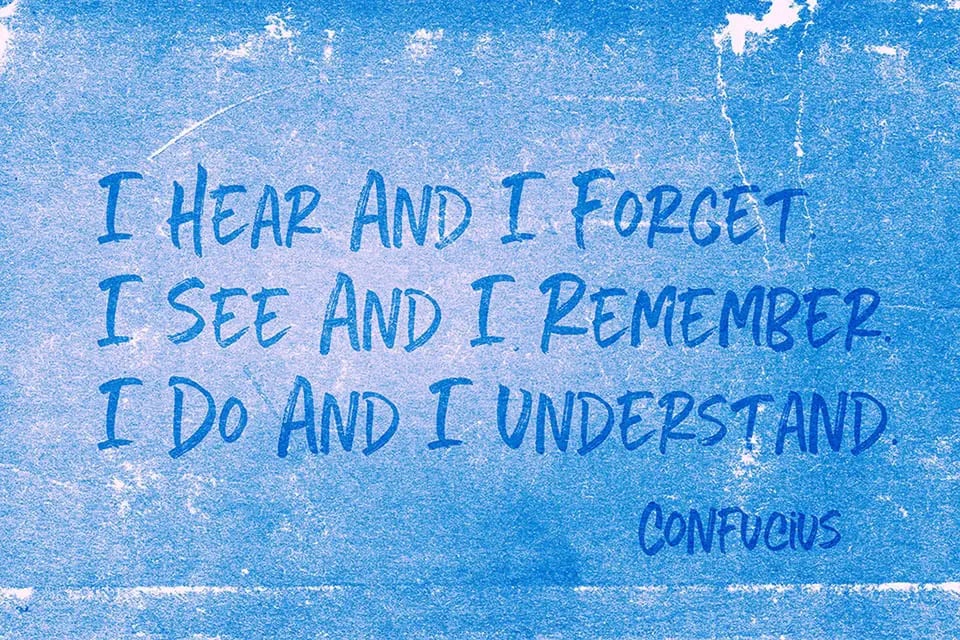
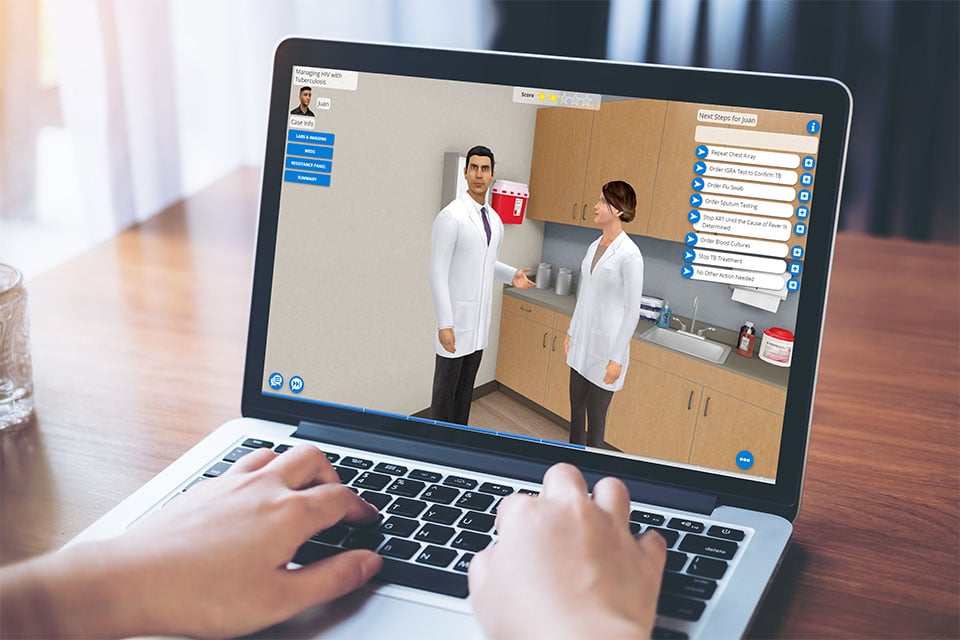
Many areas of medicine, such as oncology and chronic diseases, are challenging because patient presentations vary so much and evolve over time, based on disease progression and treatment. Decision-making is complex and nuanced, complicated by new clinical evidence or molecular testing, therapy options, risk assessment, and previous treatment paths. Simulation is the perfect fit here.
AliveSim’s Patient Management Scenarios have successfully enabled participants to build confidence recognizing and experiencing the optimal patient management paths used by experts. You can start with two or three scenarios at 1.0 credit hour, and add more scenarios, or incorporate some Targeted Virtual Practice for a key learning objective.
Patients are at the center of healthcare, and should have equal prominence in CME. AliveSim Patient Management Scenarios utilize interactive conversations between virtual patients and virtual clinicians, to provide examples of how clinicians can benefit from patient voice and shared decision-making. What is essential here is not just the virtual patient. Both the virtual patient and clinician respond to user input, to create meaningful conversations that impact decision-making. When patient voice or shared decision-making are critical practice gaps, Targeted Virtual Practice can also focus on them as specific learning objectives.
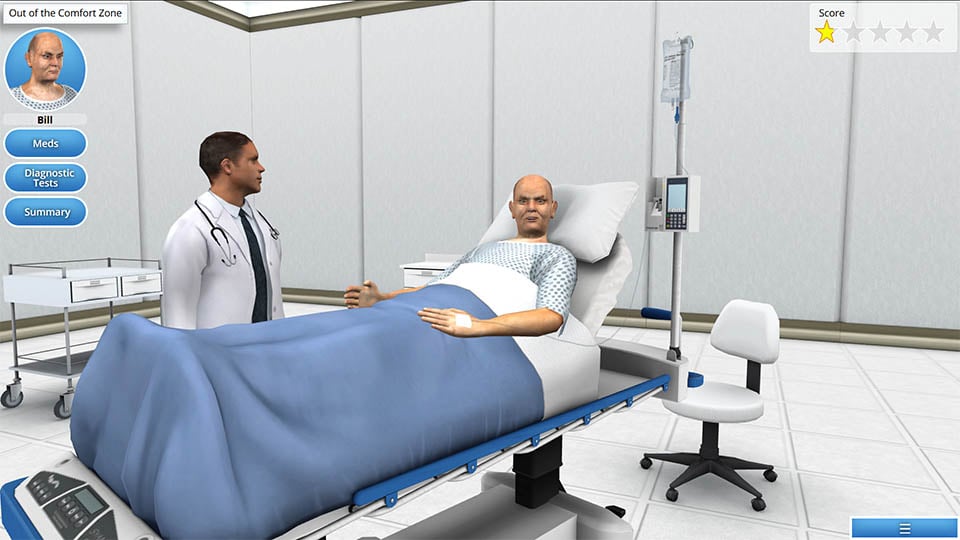
Have an idea for an activity? Let’s discuss how we can help you use our innovative AliveSim formats to create a compelling proposal.
Syandus utilizes a well-honed process for collaboration with CME providers and faculty, to create exceptional simulations and outcomes.
Syandus does the heavy lifting with clinical and technical development, to bring AliveSim simulations to life.
Simulation deployment includes delivery, web hosting, SSO integration, comprehensive analytics, reporting, technical support, and one year of access.
With AliveSim you can deliver effective practice and feedback in your CME initiative without the hassles normally associated with simulation content.
Unlike other simulation solutions, your content team doesn’t have to invest the time to learn new tools and then build simulation content. We take care of that for you. Because of our streamlined processes and technology, development costs are lower – a win for everyone.
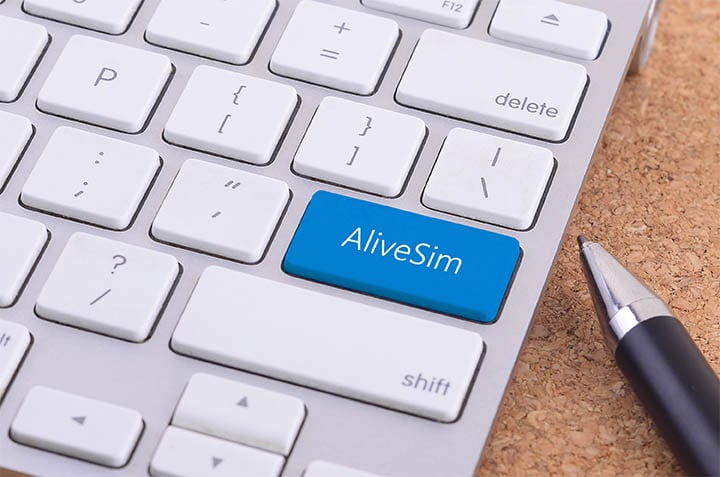
Syandus: Virtual immersive learning technology that transforms knowledge into real-world performance. We immerse participants in realistic virtual situations with one-on-one expert coaching that gives them experience making optimal decisions. Syandus Learning Modules combine cognitive science principles, the realism of game technology, and our customer’s proprietary content, to deliver rapid skill acquisition. Modules are cloud-based for easy deployment, fully trackable with embedded analytics, and can be used on any web-enabled device.
[fa icon="phone"] 610.321.2500
[fa icon="envelope"] Please enable JavaScript to see our email.
[fa icon="home"] 600 Eagleview Blvd., Suite 300